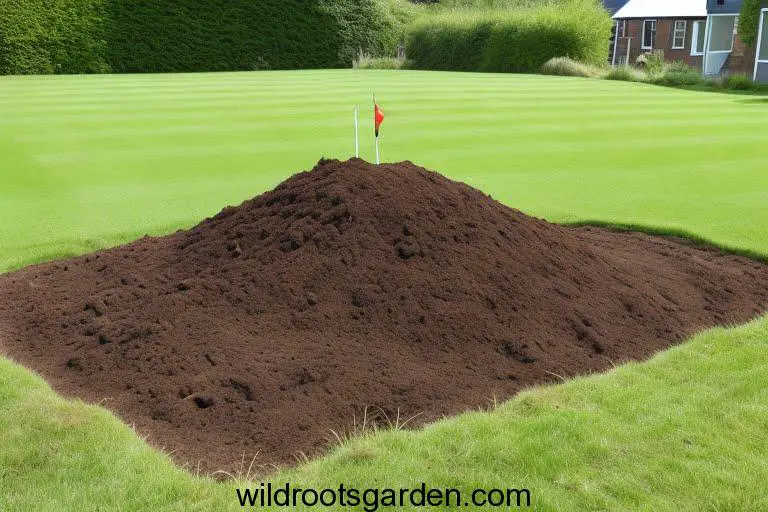Can I Put Topsoil Over Grass and Reseed? Are you dissatisfied with how your grass looks? Do you aspire to a lawn that makes your neighbors envious because it is lush, vibrant, and healthy? If this is the case, you might be wondering if there is a way to revive your grass without taking drastic measures like pulling it up entirely and beginning from over. The good news is that by spreading dirt over the current grass and reseeding, you may be able to enhance the health and beauty of your lawn. To assist you in creating the lawn of your dreams, we will examine the advantages, procedures, and factors involved in placing dirt over grass in this post.
Table of Contents
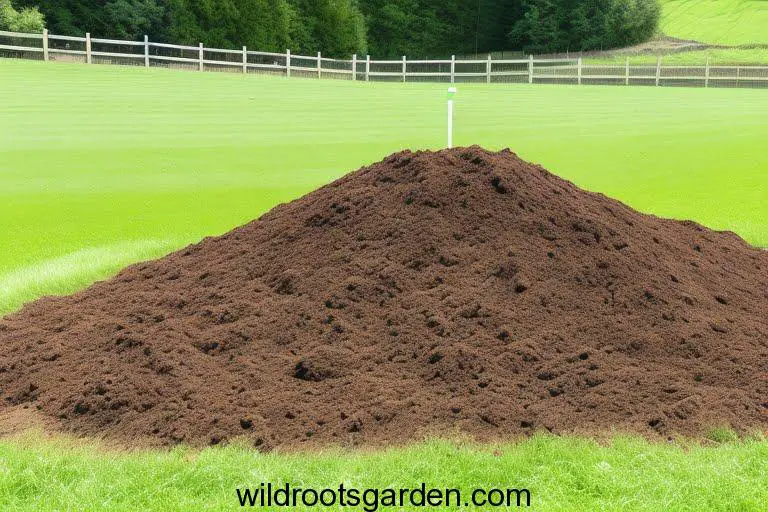
Understanding Topsoil and Its Benefits
Let’s first examine topsoil to better understand why it is necessary for a healthy lawn before moving on to the technique. The term “topsoil” describes the topmost layer of soil, which has a significant amount of organic matter, nutrients, and microbes required for plant development. In contrast to the subsoil below, it usually has a looser texture and a darker hue. When used properly, topsoil may improve soil structure, drainage, and root development, and supply the nutrients required for strong grass growth.
Assessing the Condition of the Existing Grass
You must evaluate the state of your current lawn before starting the process of spreading topsoil over grass. Examine the turf’s general condition, the density of the grass, and any bare spots. If your grass is thin, frail, or severely harmed, this may be a sign that simply adding topsoil won’t be enough to revitalize your lawn. In these circumstances, you could need to take into account substitute techniques, such as a whole renovation or sod installation.
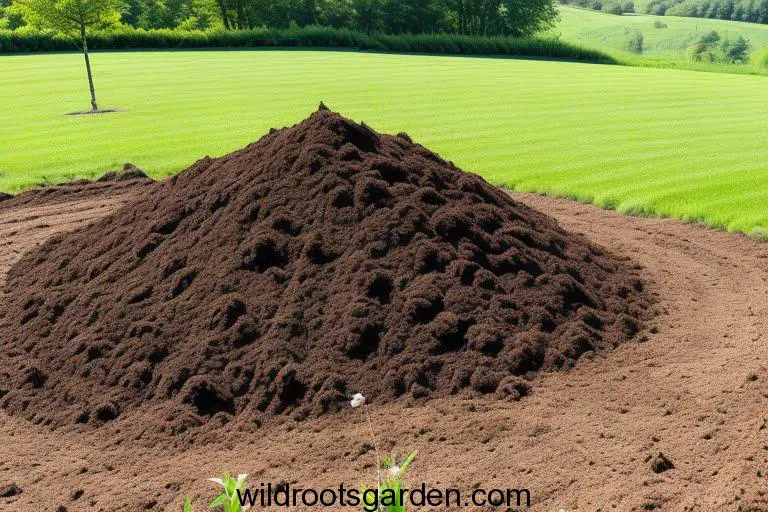
Reasons for Adding Topsoil over Grass
Topsoil is added over the grass for a number of reasons. In order to create a more equal surface, it first aids in leveling out uneven regions by filling in low places and depressions. Second, it can enhance the soil’s quality, particularly when the current soil is deficient in vital nutrients or is compacted. Thirdly, topsoil can add a new layer of organic matter to the soil, improving its capacity to hold moisture and support strong root growth.
The Process of Applying Topsoil over Grass
Now let’s delve into the step-by-step process of applying topsoil over grass and reseeding to transform your lawn into a verdant paradise.
Step 1: Preparing the Area
Start by clearing the area of any debris, such as rocks, sticks, or large clumps of vegetation. This will ensure a smooth and even application of topsoil.
Step 2: Removing Excess Vegetation
It’s best to use a sod cutter to eliminate any existing grass that is too long or dense, or to mow it at a low setting. The topsoil can now make direct touch with the soil surface thanks to this procedure.
Step 3: Soil Testing and Analysis
Doing a soil test to determine the composition and fertility of the soil is essential before spreading topsoil. Get samples from various lawn areas and send them for examination to a reliable soil testing facility. You can decide whether soil amendments are required based on the findings to improve the environment for grass growth.
Step 4: Applying the Topsoil
It’s time to apply the dirt right now. Topsoil should be applied over the current grass in an equal layer, with a thickness of around 1-2 inches. To evenly distribute the topsoil over the grass, use a rake or a leveling tool.
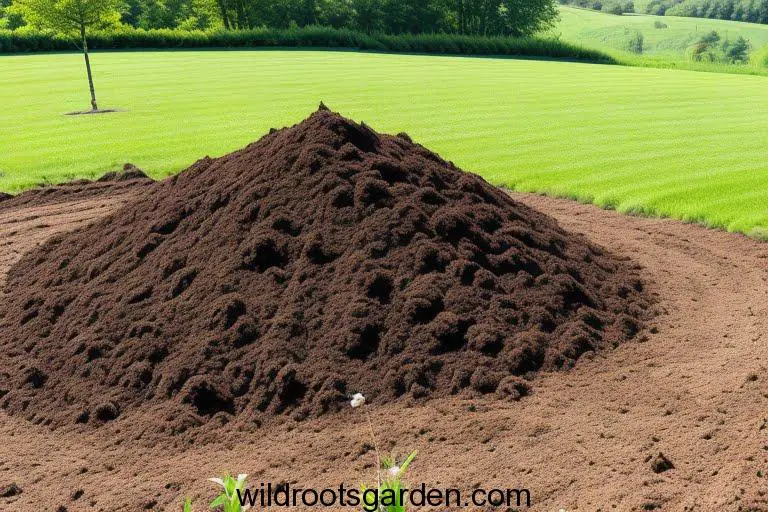
Step 5: Leveling and Smoothing the Surface
Use a drag mat or a landscaping rake to level and smooth the area after adding the topsoil. This procedure is essential to remove any unevenness and guarantee that the topsoil is distributed evenly.
Step 6: Seeding or Overseeding
Once the dirt has been smoothed, it is time to plant grass seeds or, if there are still grass patches present, to oversee the area. Choose grass seeds of the highest caliber that are suited to your climate and lawn’s needs. Using a broadcast spreader or by hand, evenly distribute the seeds over the freshly added topsoil. To achieve proper seed-to-soil contact, lightly scrape the seeds into the topsoil.
Step 7: Watering and Maintenance
To assist the seeds in settling into the topsoil and to encourage germination, properly water the area after sowing. To keep the soil continuously moist during the germination stage, stick to a regular watering plan. Also, give the newly seeded grass the required attention and upkeep, such as fertilizer, mowing, and weed control, to nourish it and obtain the best outcomes.
Factors to Consider Before Applying Topsoil
In order to achieve excellent results, some elements must be taken into account before putting topsoil over grass. Let’s investigate these elements in greater depth.
Soil Type and Quality
When deciding if topsoil addition is appropriate, it is essential to understand your soil type. It’s crucial to select topsoil that fits the soil composition needed by the grass species you want because different grass species flourish in various types of soil.
Climate and Season
The success of laying dirt over grass depends significantly on the weather and season. The optimum times to do this operation are typically in the spring or fall when the temperature is mild and the conditions are ideal for grass seed germination and establishment.
Grass Type
The sort of grass you currently have or intend to install also affects whether you decide to add topsoil. While some grass species may grow in a variety of soil types, others have more specialized needs. To make sure that adding topsoil is appropriate, learn about the particular requirements of the grass variety you have.
Level of Compaction
The problem might not be solved by simply adding dirt if the soil in your yard is significantly compacted. When applying topsoil, think about utilizing additional strategies like aeration or dethatching to enhance the soil’s structure.
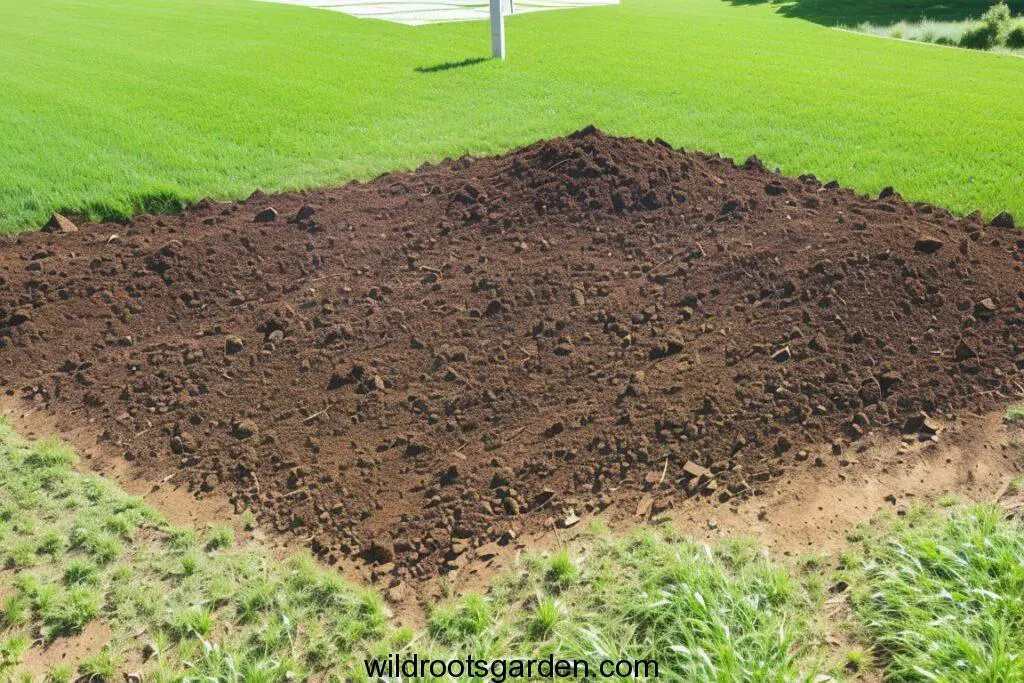
Drainage and Irrigation
Review your lawn’s irrigation and drainage systems. To avoid waterlogging, which can harm the health of the grass, proper drainage is crucial. Make sure that water can readily flow and that the newly placed topsoil won’t interfere with the way the ground is currently draining.
Benefits of Applying Topsoil over Grass
Applying topsoil to grass has some advantages that improve the general well-being and appeal of your lawn. Let’s examine these benefits in more detail.
Improved Soil Structure and Drainage
The enhancement of soil structure is one of the main advantages of adding topsoil. By breaking up compacted soil, the additional topsoil layer improves root penetration and nutrient absorption. Moreover, it improves the soil’s drainage properties, avoiding waterlogging and lowering the chance of root rot.
Enhanced Nutrient Availability
The topsoil has an abundant supply of minerals and organic matter, which the grass needs to grow. The nutrients that are released into the soil as the topsoil gradually decomposes encourage healthy development and a vivid green hue.
Increased Water Retention
By adding topsoil, you can enhance the soil’s ability to retain water. The organic matter present in the topsoil acts like a sponge, absorbing and holding moisture for longer periods. This reduces the frequency of watering required and helps to sustain the grass during dry spells.
Reduced Soil Erosion
Topsoil serves as a barrier, lowering the possibility of soil erosion brought on by wind or significant rainfall. It aids in soil surface stabilization and minimizes the loss of priceless topsoil.
Stronger Root Development
The addition of topsoil supports the formation of stronger roots in the grass due to the enhanced soil structure and increased nutrient availability. The grass can endure environmental shocks and improve overall turf resilience thanks to healthy, strong root systems.
Potential Challenges and Risks
While adding topsoil over grass can be an effective way to enhance your lawn, there are certain challenges and risks to be aware of. Let’s discuss these potential issues.
Incompatibility with Existing Grass
In some instances, the already-existing grass might not complement the freshly applied topsoil. The growth patterns, textures, and colors of various grass species or kinds can vary, giving the grass an uneven and patchy appearance.
Soil Contamination
There is a chance of soil contamination if you purchase topsoil from a third party. Make sure the topsoil is devoid of any contaminants, weed seeds, or other dangerous elements that can impair the condition of your grass.
Weed Infestation
Your lawn may become infested with weed seeds or latent weed roots if you add topsoil. Reduce the possibility of weed infection by taking preventative steps like using topsoil free of weeds or using pre-emergent herbicides.
Inadequate Soil Preparation
The success of topsoil addition might be hampered by inadequate soil preparation. To provide the fresh topsoil layer and grass seeds with the best possible environment, make sure the soil is properly aerated, dethatched, and debris-free.
Insufficient Watering or Maintenance
After adding dirt, proper watering and upkeep are essential during the establishment phase. Poor seed germination, slow grass growth, and greater susceptibility to diseases and pests can result from inadequate watering or disregard of fundamental lawn care procedures.
Expert Tips for Success
To achieve the best results when adding topsoil over grass and reseeding, consider the following expert tips:
Choosing the Right Topsoil
Select high-quality topsoil that matches the composition and texture requirements of your grass type. Look for topsoil that is free from contaminants, well-drained, and rich in organic matter.
Proper Soil Testing and Analysis
Before adding topsoil, thoroughly examine the soil to determine its composition and locate any inadequacies or imbalances. Provide the best circumstances for healthy grass growth by amending the soil by the test results.
Following Correct Application Techniques
Spread the topsoil uniformly across the surface of the lawn to ensure an even and consistent application. Remove any air pockets or unevenness from the surface by using leveling tools to make it smooth and level.
Regular Monitoring and Maintenance
Follow the development of the newly added topsoil and the emergence of grass seeds regularly. To encourage the healthy growth of the grass, maintain a strict maintenance schedule that includes appropriate watering, fertilizing, mowing, and weed control.
Conclusion
In conclusion, reseeding your lawn and spreading dirt over it might be a practical way to change your lawn and enhance its health and look. You may renew your lawn and create a lush, lively outdoor environment by adhering to the right procedure, taking into account crucial aspects, and applying professional advice. Don’t forget to evaluate the state of your current grass, choose the right topsoil, and provide sufficient care and upkeep to support the newly planted grass. You can create the lawn of your dreams and take in the beauty of a lush green haven with perseverance and commitment.
FAQs
Can I put topsoil over my existing lawn?
Yes, you can add topsoil over your existing lawn to improve its health and appearance. However, ensure that the existing grass is not severely damaged or sparse, as it may require alternative renovation methods.
How thick should the topsoil layer be?
The topsoil layer should ideally be around 1-2 inches thick when applied over existing grass. This thickness allows for good seed-to-soil contact and provides enough nutrients and organic matter to support healthy grass growth.
Is it necessary to remove the existing grass before applying topsoil?
It is not always necessary to remove the existing grass before applying topsoil. However, if the grass is excessively long or dense, it’s advisable to mow it at a low height or use a sod cutter to ensure proper contact between the topsoil and the soil surface.
When is the best time to add topsoil over grass?
The best time to add topsoil over grass is during the spring or fall when the weather conditions are mild. These seasons provide optimal conditions for grass seed germination and establishment.
Can I walk on the newly applied topsoil?
It’s best to avoid walking on the newly applied topsoil to prevent compaction and disturbance of the seeds. If necessary, use wooden boards or stepping stones to distribute your weight evenly and minimize potential damage to the newly seeded area.

